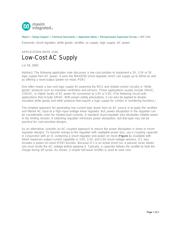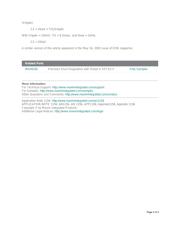下载

Maxim > Design Support > Technical Documents > Application Notes > Microprocessor Supervisor Circuits > APP 1156
Keywords: shunt regulator, white goods, rectifier, ac supply, logic supply, AC power
APPLICATION NOTE 1156
Low-Cost AC Supply
Jul 29, 2002
Abstract: The following application note discusses a low-cost solution to implement a 3V, 3.3V or 5V
logic supply from AC power. It uses the MAX6330 shunt regulator which can supply up to 50mA as well
as offering a reset output (power-on reset, POR).
One often needs a low-cost logic supply for powering the MCU and related control circuitry in "white
goods" products such as industrial controllers and sensors. Those applications usually include 24VAC,
115VAC, or higher levels of AC power for conversion to 3.3V or 5.0V. (The following circuit suits
applications that include 24VAC. With proper safety precautions, it can also be applied to double-
insulated white goods and other products that require a logic supply for control or monitoring functions.)
The simplest approach for generating low-current logic levels from an AC source is to apply the rectified
and filtered AC input to a high-input-voltage linear regulator. But, power dissipation in the regulator can
be considerable, even for modest load currents. A standard shunt regulator also dissipates notable power
in the limiting resistor. A switching regulator minimizes power dissipation, but that type may not be
practical for cost-sensitive designs.
As an alternative, consider an AC-coupled approach to reduce the power dissipation in linear or shunt-
regulator designs. To transfer energy to the regulator with negligible power loss, use a coupling capacitor
in conjunction with an IC containing a shunt regulator and power-on reset (Figure 1). Available with
50mA maximum output-current capability in 3.0V, 3.3V, and 5.0V shunt-voltage versions, IC1 also
includes a power-on-reset (POR) function. Because IC1 is an active shunt (vs. a passive zener diode)
one must rectify the AC voltage before applying it. Typically, a capacitor follows the rectifier to hold the
charge during off cycles. As shown, a simple half wave rectifier is used to save cost.
Page 1 of 3





